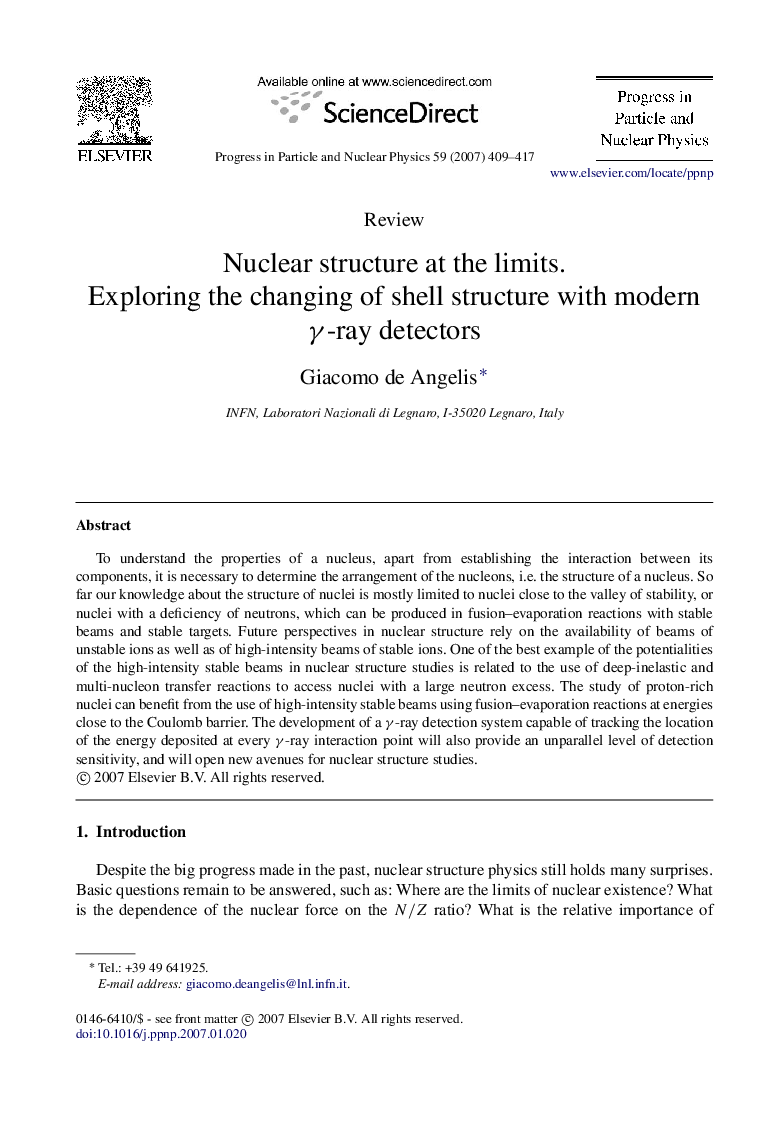| Article ID | Journal | Published Year | Pages | File Type |
|---|---|---|---|---|
| 1854616 | Progress in Particle and Nuclear Physics | 2007 | 9 Pages |
To understand the properties of a nucleus, apart from establishing the interaction between its components, it is necessary to determine the arrangement of the nucleons, i.e. the structure of a nucleus. So far our knowledge about the structure of nuclei is mostly limited to nuclei close to the valley of stability, or nuclei with a deficiency of neutrons, which can be produced in fusion–evaporation reactions with stable beams and stable targets. Future perspectives in nuclear structure rely on the availability of beams of unstable ions as well as of high-intensity beams of stable ions. One of the best example of the potentialities of the high-intensity stable beams in nuclear structure studies is related to the use of deep-inelastic and multi-nucleon transfer reactions to access nuclei with a large neutron excess. The study of proton-rich nuclei can benefit from the use of high-intensity stable beams using fusion–evaporation reactions at energies close to the Coulomb barrier. The development of a γγ-ray detection system capable of tracking the location of the energy deposited at every γγ-ray interaction point will also provide an unparallel level of detection sensitivity, and will open new avenues for nuclear structure studies.
